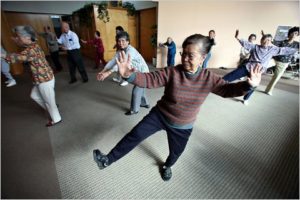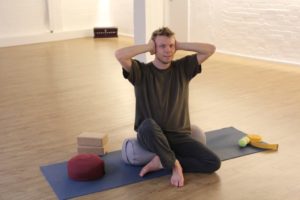Improve Symptoms of Chronic Heart Failure with Mindfulness
By John M. de Castro, Ph.D.
“On the surface, heart failure seems to be a purely physical problem. The heart muscle is too weak, or too stiff, to pump enough blood to meet the body’s demands. . .. But it’s an emotional and psychological problem, too, that can lead to depression, anxiety, and grief. These not only cast a pall on daily life, but they can make heart failure worse as well. A program based on the practice of mindfulness helps ease depression and improve symptoms of heart failure.” – Harvard Heart Letter
Cardiovascular disease is the number one killer, claiming more lives than all forms of cancer combined. “Heart disease is the leading cause of death for both men and women. About 610,000 people die of heart disease in the United States every year–that’s 1 in every 4 deaths. Every year about 735,000 Americans have a heart attack.” – Centers for Disease Control. Congestive heart failure (CHF) is a major type of cardiovascular disease. “CHF is a chronic progressive condition that affects the pumping power of your heart muscles. While often referred to simply as “heart failure,” CHF specifically refers to the stage in which fluid builds up around the heart and causes it to pump inefficiently” (Healthline).
There are myriads of treatments that have been developed to treat Heart Failure including a variety of surgical procedures and medications. Importantly, lifestyle changes have proved to be quite effective. These include quitting smoking, weight reduction, improved diet, physical activity, and reducing stresses. Contemplative practices, such as meditation, tai chi and yoga, have been shown to be helpful for heart health. In addition, mindfulness practices have also been shown to be helpful for producing the kinds of other lifestyle changes needed such as smoking cessation, weight reduction, and stress reduction.
In today’s Research News article “Effects of a mindfulness-based intervention on symptoms and signs in chronic heart failure: A feasibility study.” (See summary below or view the full text of the study at: https://www.ncbi.nlm.nih.gov/pmc/articles/PMC5751854/ ), Norman and colleagues recruited patients diagnosed with chronic heart failure and randomly assigned them to receive either treatment as usual or to participate in an additional mindfulness-based intervention. The intervention was based upon Mindfulness-Based Stress Reduction (MBSR) program with additional psychoeducation based upon Mindfulness-Based Cognitive Therapy (MBCT) and consisted of meditation, yoga, and body scan. They met in 2-hour group sessions once a week for 8 weeks with additional daily home practice. The participants were measured before and after training for fatigue, sleep, heart failure symptoms and their severity, functional capacity, resting heart and respiration rate, and body size.
They found compared to baseline and control participants, those that participated in the mindfulness intervention had significantly less fatigue, unsteadiness/dizziness, and improved physical functioning, including less breathlessness during activities and greater walking distance. Hence, mindfulness practice was found to improve the symptoms of heart failure.
This was a small study and needs to be followed up with a larger controlled clinical trial with an active control group, e.g. exercise, and longer-term follow-up. But, this initial study is encouraging. Although no component analysis was performed to identify which elements of the complex mindfulness intervention were effective for which symptoms, it can be speculated that the exercise provided by the yoga practice and the stress reduction provided by the mindfulness practice were responsible for the improvements in the symptoms of heart failure.
So, improve symptoms of chronic heart failure with mindfulness.
“a significant part of the link between mindfulness and cardiovascular health was attributable to mindful people feeling a greater sense of control and less depression, which is thought to lead to more heart-friendly behaviors.” Adam Hoffman
CMCS – Center for Mindfulness and Contemplative Studies
This and other Contemplative Studies posts are also available on Google+ https://plus.google.com/106784388191201299496/posts and on Twitter @MindfulResearch
Study Summary
Jonna Norman, Michael Fu, Inger Ekman, Lena Björck, Kristin Falk. Effects of a mindfulness-based intervention on symptoms and signs in chronic heart failure: A feasibility study. Eur J Cardiovasc Nurs. 2018 Jan; 17(1): 54–65. Published online 2017 Jun 22. doi: 10.1177/1474515117715843
Abstract
Aims:
Despite treatment recommended by guidelines, many patients with chronic heart failure remain symptomatic. Evidence is accumulating that mindfulness-based interventions (MBIs) have beneficial psychological and physiological effects. The aim of this study was to explore the feasibility of MBI on symptoms and signs in patients with chronic heart failure in outpatient clinical settings.
Methods:
A prospective feasibility study. Fifty stable but symptomatic patients with chronic heart failure, despite optimized guideline-recommended treatment, were enrolled at baseline. In total, 40 participants (median age 76 years; New York Heart Association (NYHA) classification II−III) adhered to the study. Most patients (n=17) were randomized into MBI, a structured eight-week mindfulness-based educational and training programme, or controls with usual care (n=16). Primary outcome was self-reported fatigue on the Fatigue severity scale. Secondary outcomes were self-reported sleep quality, unsteadiness/dizziness, NYHA functional classification, walking distance in the six-minute walk test, and heart and respiratory rates. The Mann–Whitney U test was used to analyse median sum changes from baseline to follow-up (week 10±1).
Results:
Compared with usual care (zero change), MBI significantly reduced the self-reported impact of fatigue (effect size −8.0; p=0.0165), symptoms of unsteadiness/dizziness (p=0.0390) and breathlessness/tiredness related to physical functioning (NYHA class) (p=0.0087). No adverse effects were found.
Conclusions:
In stable but symptomatic outpatients with chronic heart failure, MBI alleviated self-reported symptoms in addition to conventional treatment. The sample size is small and further studies are needed, but findings support the role of MBI as a feasible complementary option, both clinically and as home-based treatment, which might contribute to reduction of the symptom burden in patients diagnosed with chronic heart failure.









